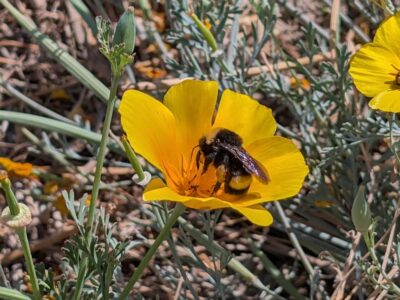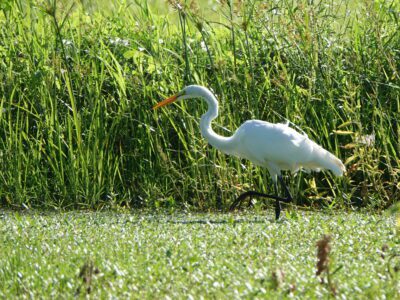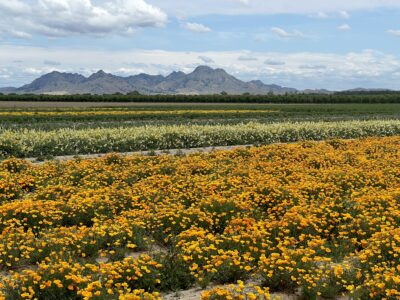Recently, River Partners had the honor of hosting Golden State Naturalist podcast creator and host Michelle Fullner at the 1,600-acre Dos Rios State Park, the largest public-private multi-benefit floodplain restoration in state history located a short drive from Modesto.
Michelle toured the restored riparian forest with Austin Stevenot, Northern Sierra Mewuk and River Partners first Director of Tribal Engagement. Together, they explored how one plant used by Indigenous people to make cordage—dogbane—can teach us about the past, present, and future of the land and the people connected to it.
Watch “This Isn’t Just a String” by Michelle Fullner, Golden State Naturalist
This isn’t just a bit of string. This is a thread you can follow back through time for thousands of years.
And it all starts with a plant.
This is dogbane, apocynum cannabium. It’s native to most of North America and used to be common here in California’s Central Valley, where Indigenous people have long used it to make cordage, or hi-lo-, the word for string in the Northern Sierra Mewuk language, for basketry, nets, and everyday uses.
But when settlers arrived en masse in the 1850s, they removed the plant wherever they found it because it’s poisonous to livestock, at the same time removing milkweed, vast swaths of riparian forest, and even the valley’s once-extensive system of wetlands.
This reshaping of the land reduced its complexity, creating vulnerable monocultures where resilient ecosystems were once cultivated, tended, and enhanced by Indigenous stewards.
The change is so drastic that most Californians today wouldn’t even recognize the sprawling forests, wetlands, and sea of wildflowers of the Central Valley of a few hundred years ago.
Yet, even in the face of these overwhelming obstacles, dogbane persisted. For the past 175 years, it’s taken root in forgotten pockets and along roadsides and rails. Its seeds have lain dormant in the soil, waiting for the opportunity to return.
Thankfully, that opportunity is now emerging for dogbane. A massive 2,100 acre restoration project in the San Joaquin Valley, led by the nonprofit River Partners, is not only making way for that return, but also intentionally welcoming back Indigenous culture bearers like Austin Stevenot, the first Director of Tribal Engagement at River Partners, who taught me dogbane’s history and how to use it to make cordage.
And not only can that dogbane cord guide us to a better understanding of the past, it can also show us how to live better today and how to move forward into an uncertain future.
Because just as a single strand of cordage is made stronger by twisting fibers together, the land itself is strengthened when all of its members–dogbane, milkweed, riparian forests, wetlands, and human stewards–are among the threads tying the entire landscape back together.
—Michelle Fullner, Golden State Naturalist








